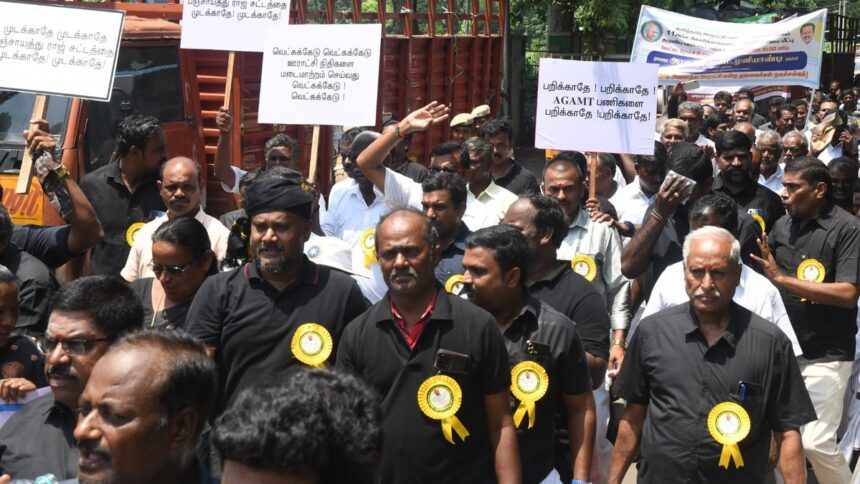Only 1% of panchayats’ revenue is generated independently, with the remainder comprised largely of grants from state and central governments, according to recent data. Specifically, 80% of revenue comes from central government grants, while just 15% is sourced from state government grants. This results in panchayat revenue constituting a minimal portion of the overall revenue of the states.
Panchayats operate at three levels: gram sabhas, panchayat samithis, and zila parishads, overseeing various responsibilities such as agriculture, rural housing, water management, rural electrification, healthcare, and sanitation. In certain instances, zila parishads also manage schools, hospitals, dispensaries, and minor irrigation projects.
Due to their reliance on state and central funding, many panchayats experience significant interference from higher tiers of government. In August of last year, numerous panchayat heads convened in Chennai to demand greater independence for the Panchayati Raj system. Reports from Telangana indicated that delays in state fund disbursements forced sarpanches to resort to private financing. The Standing Committee on Rural Development and Panchayati Raj noted in March that 19 out of 34 states and union territories did not receive any funds under the Rashtriya Gram Swaraj Abhiyan scheme during the fiscal year 2023. This program was initiated to enhance capacity and train elected representatives.
A newly released report by the Reserve Bank of India detailing the finances of Panchayati Raj Institutions for 2022-23 suggests advocating for greater decentralization and empowering local leaders and officials. That year, overall panchayat revenue totaled ₹35,354 crore, with merely ₹737 crore accrued from their own tax revenues. This revenue stems from sources such as taxes on professions and trades, land revenue, stamp and registration fees, property taxes, and service taxes.
In 2022-23, panchayats earned ₹1,494 crore in non-tax revenue, primarily from interest payments and Panchayati Raj programs. By contrast, central government grants accounted for ₹24,699 crore, while state government grants totaled ₹8,148 crore.
With each panchayat averaging a tax revenue of only ₹21,000 and non-tax revenue of ₹73,000, significant disparities also emerge in grant allocations. On average, each panchayat received approximately ₹17 lakh from the central government and over ₹3.25 lakh from state governments. In essence, the revenue generated by panchayats only contributes 1% to their overall financial intake.
Examining the average revenue per panchayat highlights stark variations across states. For instance, Kerala reported an average revenue of over ₹60 lakh per panchayat in the fiscal year 2023, closely followed by West Bengal at ₹57 lakh. States like Assam, Bihar, Karnataka, Odisha, Sikkim, and Tamil Nadu reported revenue exceeding ₹30 lakh per panchayat, while Andhra Pradesh, Haryana, Mizoram, Punjab, and Uttarakhand generated less than ₹6 lakh.
Due to limited revenue-generating capabilities, panchayats’ contributions to state revenue remain low. For example, in Andhra Pradesh, panchayat revenue made up only 0.1% of the state’s overall revenue, while Uttar Pradesh’s contribution was the highest at 2.5%.
Source: Reserve Bank of India (RBI) report titled ‘Finances of Panchayati Raj Institutions’










